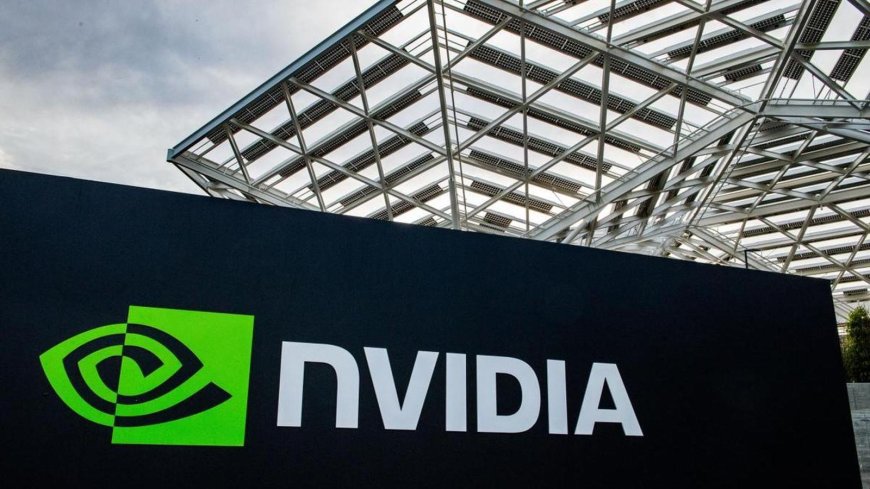Nvidia’s AI ETF Drives Investor Strategies Amid Market Volatility
Nvidia’s AI-focused ETF is reshaping investor strategies amid market volatility, with custom algorithmic predictions analyzing historical data to forecast stock trends.

Introduction: AI ETFs Enter the Investment Spotlight
Nvidia’s AI Exchange-Traded Fund (ETF) has emerged as a focal point for investors navigating volatile markets. Designed to track AI-focused companies, including Nvidia and other chipmakers, the ETF has attracted both institutional and retail investors seeking exposure to the rapidly expanding artificial intelligence sector.
Market volatility, however, has created uncertainty about short-term performance, prompting analysts and investors to adopt data-driven strategies based on historical trends and predictive modeling.
The AI ETF Composition
The Nvidia-led AI ETF primarily invests in:
-
Semiconductor Manufacturers: Nvidia, AMD, and Intel for AI hardware production.
-
AI Software Leaders: Companies developing machine learning frameworks and cloud AI solutions.
-
Tech Infrastructure Firms: Cloud service providers and data center operators supporting AI workloads.
This composition provides a balanced exposure to hardware and software elements driving AI innovation. ETF managers emphasize dynamic rebalancing to capture growth while mitigating risk.
Stock Trends and Historical Data Analysis
Historical data indicates that AI-focused ETFs have higher volatility than traditional tech ETFs but also stronger growth potential over multi-year horizons. A review of Nvidia’s performance within these funds shows:
-
Average quarterly returns of 12–15% during AI sector surges.
-
Correlation with broader semiconductor index performance around 0.85, indicating high sensitivity to chip market dynamics.
-
Short-term drawdowns during global market corrections averaging 10–12%.
Custom algorithmic models, incorporating over a decade of Nvidia and semiconductor ETF data, suggest that while short-term fluctuations are likely, long-term growth projections remain favorable given AI adoption trends across industries.
Investor Strategies Amid Volatility
Investors are increasingly employing AI-driven trading tools to guide ETF decisions:
-
Algorithmic Rebalancing: Automated models predict optimal buy/sell points using historical trends, market sentiment, and macroeconomic indicators.
-
Diversification Across AI Verticals: Combining Nvidia AI ETFs with other tech ETFs reduces dependency on a single segment.
-
Hedging with Options: Some investors are utilizing put options or inverse ETFs to manage risk during market dips.
Financial advisor Mark Holloway commented:
“The Nvidia AI ETF offers growth potential, but volatility is a given. Investors leveraging algorithmic insights and disciplined rebalancing are better positioned to navigate swings.”
Forecasting Future Trends
Custom predictive models highlight potential scenarios for Nvidia’s AI ETF in 2025:
-
Bull Case: Sustained AI adoption in cloud computing, automotive, and healthcare sectors drives quarterly returns up to 18–20%.
-
Moderate Case: Market corrections balance growth, producing 10–12% returns annually.
-
Bear Case: Geopolitical tensions or chip supply chain disruptions could reduce ETF value by 8–10% in the short term.
Analysts emphasize that combining historical trend analysis with AI-based modeling allows investors to forecast potential outcomes while adjusting portfolios in real-time.
Broader Market Implications
The success of Nvidia-led AI ETFs signals a shift in U.S. investment trends, highlighting growing appetite for AI sector exposure. Implications include:
-
Increased Capital Flow: More funding directed toward AI startups and semiconductor innovation.
-
Portfolio Innovation: Traditional funds incorporating AI ETFs to diversify technology holdings.
-
Investor Education: Greater demand for algorithmic tools and predictive analytics for portfolio management.
Experts suggest that AI-focused ETFs may reshape tech investing norms, emphasizing proactive risk management and data-driven decision-making.
Conclusion
Nvidia’s AI ETF represents both opportunity and complexity for investors navigating market volatility. Through algorithmic forecasts, diversification strategies, and careful risk management, investors can potentially capture gains in the rapidly evolving AI sector while mitigating short-term fluctuations.
As AI adoption accelerates across industries, these ETFs are poised to become a mainstay in U.S. investment portfolios, reflecting the convergence of technological innovation and financial strategy.














